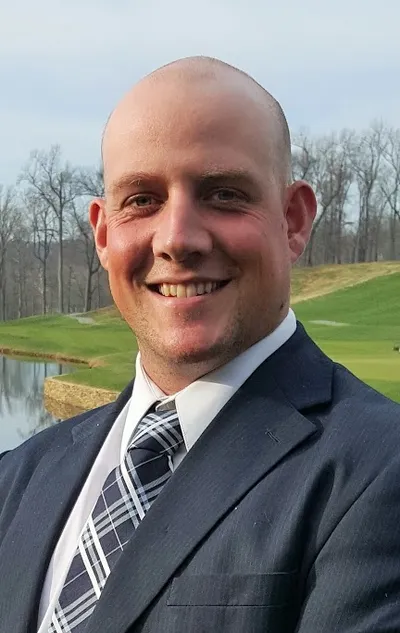
Editor’s Note: The following article was published in Golf Course Industry, December 2023 (https://www.golfcourseindustry.com/news/strategic-partners-golf-course-superintendents-clubs/)
A few months back, I had an insightful conversation with Golf Course Industry managing editor Matt LaWell. He asked me a thought-provoking question: “What was one of the most surprising observations over the last year?”
As I look back at not only the searches we’ve conducted in the last year, the courses I visited coast-to-coast, and the daily interactions with golf course superintendents everywhere, we get a good flavor of surprises ranging from staffing, technology, agronomics, club politics and everything in between.
But there is one engagement that continues to surface from very competent and accomplished superintendents to newcomers in their leadership roles that throws me into a loop. The engagement is often filled with frustration, disappointment, and stress mixed with a blend of openness, vulnerability, and a sense of feeling undervalued.
Naturally, in each of these interactions, there were some similar challenges on the surface: budgetary constraints, lack of recognition, unrealistic expectations, communication gaps, lack of awareness about the complexities and technicalities of golf course management, and inability to undertake key action steps towards a brighter future.
I explored deeper, and a common theme emerged. Superintendents are not often seen as strategic partners within their facilities, but more as operational supporters, limiting their influence in decision-making processes with little voice in the broader strategic and governance decisions.
As I reflect on the superintendent search processes our team has conducted, I’m surprised by how often there is a disconnect between the golf course superintendent and club leadership.
When we uncover some of the root issues and opportunities facing clubs and their operations, there is often a communication breakdown leading to growing frustrations, and in some cases deteriorating course conditions. The end result leads to change – voluntarily or not. While it would be easy to point the finger at the superintendent for not taking ownership of his/her destiny, often I am finding there is a layer of bureaucracy that prohibits superintendents from effectively communicating with decision-makers, share insights, advocating for course improvements, or developing advocates.
Whether implementing advanced maintenance practices, investing in new technologies, pursuing environmental sustainability initiatives or staff development, key actions and shared visions cannot be accomplished, because the professional expert has been shielded. While it has come a long way in image and importance, the superintendent profession still often operates in isolation or without sufficient interaction with the most influential decision-makers.
Why is that?
First, the day-to-day demands of maintaining a golf course can be all-consuming. This leaves little time for engaging in broader strategic discussions or collaborating with other departments.
When it is the heat of the growing and playing season, it is tough to focus on much beyond keeping grass alive, member service and operations. In most of my peers’ cases, they are doing this with limited skilled labor.
Secondly, the specialized nature of the work of golf course maintenance can lead to a disconnect between superintendents and others in the organization. Whether it’s the individuals they report to or the casual golfer, the intricacies of their work can create natural separation in day-to-day operations. It places great importance on effective communication in laymen terms with decision-makers.
While digital platforms have helped bridge some of these communication gaps, many still don’t fully grasp the importance of factors like aeration, frost delays, maintenance schedules or the balance of providing high-level service and quality with limited resources amid a talent shortage of skilled labor.
Lastly, historical precedents, internal politics, and traditional governance models have not evolved to include roles like the superintendent in decision-making processes. I believe this is a major opportunity for our industry associations including the CMAA, GCSAA, and PGA to advocate for this expanded role in governance.
As I personally experienced, trying to fulfill responsibilities independently, without adequate support or understanding from club governance creates a feeling of being undervalued or not heard.
Managing differing opinions, and conflicts of interest, and aligning visions and goals can be a constant challenge, whether at the governance level or within the leadership team. Achieving team goals can be difficult even in the best of times. Throw in mistrust, miscommunication, and misalignment, and then barriers of governance can implode the best-performing leaders.
Having professional recommendations or decisions routinely overruled or ignored by a general manager, club owner, or the board, especially in matters critical to the health and playability of the course, is deflating. I remember feeling like I was on an island with no direction or support. Looking back, I realize that improving communication and building stronger relationships would’ve been a critical turning point. Building relationships is integral, not optional.
Here are some other suggestions to overcome this obstacle:
Gain a thorough understanding of the board’s goals and strategic vision by actively listening and participating in board meetings or requesting documentation of their long-term and short-term objectives. This will provide opportunities to link your performance and the department’s output to the overall goals of the club. Agree on key performance indicators that link course conditions to member satisfaction, financial performance, and larger business objectives. Ensure these KPIs are specific, measurable, actionable, relevant, and timely, and regularly report on them to keep the board and other key stakeholders informed and accountable.
Provide structured updates to the board on course conditions, maintenance schedules, and challenges through the proper channels – whether via your general manager, green committee, or directly – using data and case studies to support your communication and decisions.
Facilitate conversations around results and your duty to uphold the board’s priorities, not persuading others out of necessity to fill operational needs.
Develop maintenance plans aligned with the board’s priorities, such as enhancing member experience or ensuring financial sustainability. Present these plans to the board for feedback, approval and outline any potential gaps or pitfalls in achieving the goals. Do not shy away from telling the truth or reservations you may have.
Offer educational sessions for board members to increase their understanding of agronomy, course management, and environmental stewardship. Clearly explain how course maintenance practices impact broader strategic goals. Consider soliciting outside perspectives from consultants, peers, or other comparable clubs to support your case.
Start by seeking opportunities to collaborate with other departments, share knowledge, and actively participate in the broader business aspects of managing the golf course. While staying in your lane is important, it will strengthen your capacity to emphasize and lean into supporting other departments, build relationships and create a service-centered approach that will trickle down.
Implement mechanisms for board members to provide feedback on course conditions and maintenance issues constructively. Don’t be afraid to address potential struggles head-on, which not only increases your credibility but also improves cohesion and makes progress in building awareness of the challenges within the role. This will ultimately help accomplish your goals.
By fostering a more strategic relationship with the board and ensuring their actions align with the club’s strategic direction, superintendents can enhance their role as vital partners in the success of the organization and the game of golf.
Whether you’re looking to improve your operations, enhance your recruitment and retention practices, or direct search advisory, schedule a FREE Talent Strategy Call. We’ll help you navigate your next steps and path to achieve your goals.

